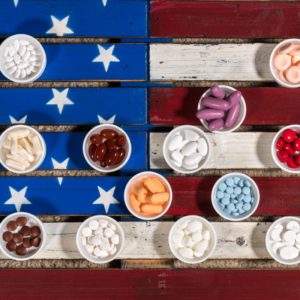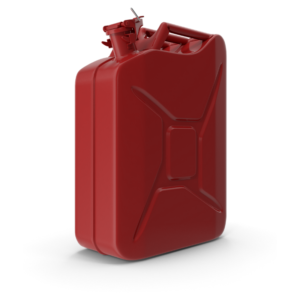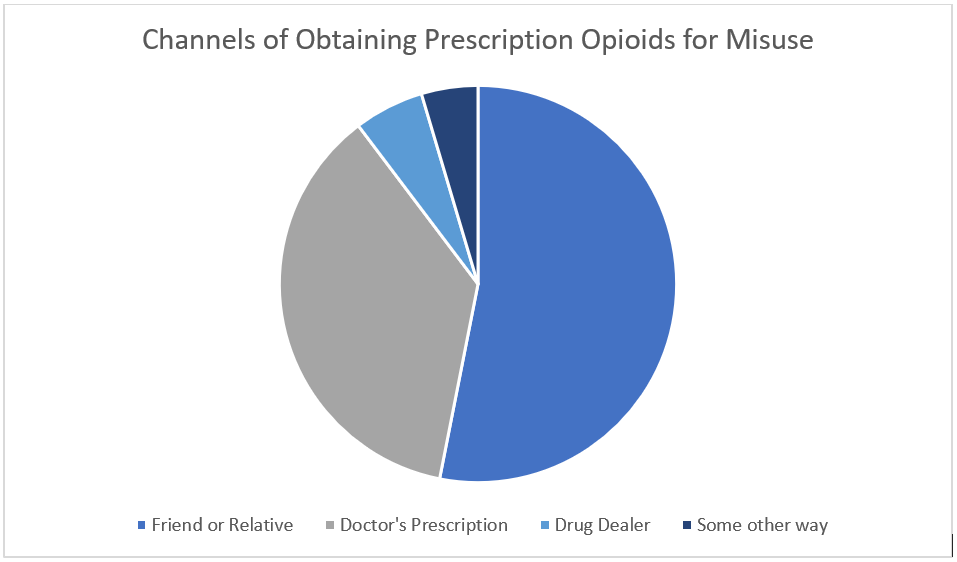by Gabriel Levitt, President, PharmacyChecker.com and Prescription Justice | Oct 26, 2018 | Drug Prices
 Yesterday, with great public relations fanfare, a new report from President Trump’s HHS was released showing that drug prices in other countries are often half the price they are in America. Who would have known? Well, for starters, the millions of Americans who are forced to shop internationally in order to afford their meds. Prices in other countries are actually much less than half for many drugs, but this report only looked at drugs in Medicare Part B, ones administered in a clinical setting by a healthcare provider – not picked up at the pharmacy.
Yesterday, with great public relations fanfare, a new report from President Trump’s HHS was released showing that drug prices in other countries are often half the price they are in America. Who would have known? Well, for starters, the millions of Americans who are forced to shop internationally in order to afford their meds. Prices in other countries are actually much less than half for many drugs, but this report only looked at drugs in Medicare Part B, ones administered in a clinical setting by a healthcare provider – not picked up at the pharmacy.
Trump’s rhetoric on drug prices is one of the few unifying issues in our deeply-divided country. Trump has stated on several occasions that the “drug companies are getting away with murder.” Murder. Now, while his administration hasn’t really done much at all on drug prices, the latest report puts it out there loud and clear: drug prices are insanely lower in other rich countries than here in the United States.
(more…)
Tagged with: Alex Azar, Donald Trump, politics
by Gabriel Levitt, President, PharmacyChecker.com and Prescription Justice | Oct 18, 2018 | Drug Prices
 As announced by HHS Secretary Alex Azar, the Trump administration is planning to force drug companies to include prices in their advertising. That means that, along with the long list of drug side effects that you hear during a TV ad, you’ll see the list prices. That list price is referred to as the wholesale acquisition cost, which is around the cash price you’d pay without insurance. Prices would have to be included in all ads for drugs covered by Medicare and Medicaid (i.e. pretty much all drugs).
As announced by HHS Secretary Alex Azar, the Trump administration is planning to force drug companies to include prices in their advertising. That means that, along with the long list of drug side effects that you hear during a TV ad, you’ll see the list prices. That list price is referred to as the wholesale acquisition cost, which is around the cash price you’d pay without insurance. Prices would have to be included in all ads for drugs covered by Medicare and Medicaid (i.e. pretty much all drugs).
I don’t particularly love this idea, but it is better than nothing.
The goal of this policy is to control drug prices by making them more transparent. Sound unlikely? It has a noble free market, pro-consumer ring to it, which I kind of like. It will be fun to see how this plays out, but it’s a minuscule policy move that won’t bring the kind of drug price relief that Americans want and need. In the proposed rule, Azar, or whichever of his staff wrote it, is all high and mighty about transparency and market efficiency:
“Markets operate more efficiently when consumers have relevant information about a product, including its price, as well as alternative products and their prices, before making an informed decision whether to buy that product or, instead, a competing one.”
At PharmacyChecker, we know a lot about the importance of drug price transparency. That happens to be one of the things we’re best at (along with verifying pharmacy practice standards). Our recognized forte is international pharmacy drug price transparency.
Here’s a scenario for you:
In this future world of Azarian drug price transparency, Jorge from Brooklyn will be watching the baseball game (maybe the Yankees in the World Series next year), and he’ll see an ad by Merck for the drug, Januvia. Jorge has just learned he has Type 2 diabetes and has a prescription. He’ll hear that Januvia can help lower his blood sugar, which is good. Then, he’ll hear that the side effects could include joint pain, a skin reaction requiring treatment in a hospital, and even death from pancreatitis. He gets that all these ads have to list those side effects.
Then he hears: it’s $550 for a one-month supply; but, wait, it will likely cost much less with insurance! That doesn’t exactly help. Jorge is one of 30 million uninsured Americans, and $550 is more than he can afford after paying his rent, groceries, gas bill, his daughter’s ballet classes, and his son’s asthma inhaler. Yes, he’ll hear there are Januvia patient assistance programs that might be able to help. Let’s hope so…because people often don’t qualify.
There’s no generic competition for this drug in Brooklyn. Unlike generic drugs, you can’t pharmacy hop for the best price or find a significantly lower U.S. price on the web. So what good is that transparency other than a minor slap on the hand to Big Pharma?
45 million Americans didn’t fill a script in 2016 because they faced similar situations to Jorge.
But there’s hope! When my fellow Americans visit www.pharmacychecker.com, they are blown away that the price of a drug is almost nine times higher in the U.S. than in Canada – and, yes, I mean Canada (not India or Turkey, where drug prices are even lower, and for the same drug).
On our website, Jorge learns that brand-name Januvia is $270 for a three-month supply if he orders it from Canada. Now that’s Drug Price Transparency! It’s a massive punch to the Big Pharma gut.
|
Januvia Prices in the U.S. vs. Canada
|
| Drug |
U.S. Price |
Canadian Online Pharmacy Price |
Savings |
| Januvia 100 mg |
$1,593.90 |
$269.94 |
83% |
Canadian pharmacy prices among verified international online pharmacies in the PharmacyChecker Verification Program are ones he can afford. If he cannot, then those same online pharmacies may also refer orders to pharmacies outside of Canada, which may have even lower prices.
Azar’s proposal shows just how vulnerable Americans are
To the credit of Azar’s proposed rule, it at least identifies how incredibly vulnerable Americans are to drug prices.
- Uninsured paying cash prices
- Insured finding that PBM formularies don’t cover all drugs
- Insured finding they must pay co-insurance of 30-60% (not just copays) on really expensive drugs (in the many thousands per month)
These coverage gaps affect tens of millions of people each year, which is why we have a crisis. Making drug companies note the price in TV ads while leaving the patient powerless to do anything stinks.
Interestingly, one drug company, Johnson & Johnson, warns that this is a bad idea because people might end up not taking their prescribed medications. The Onion couldn’t do better than this. It’s not The Onion, though. It’s Bloomberg: J&J Says Putting Drug Prices in Ads May Scare Away Patients.
From the mouth of Big Pharma…
Tagged with: Alex Azar, Drug advertising, Januvia, politics, transparency
by Gabriel Levitt, President, PharmacyChecker.com and Prescription Justice | Oct 12, 2018 | Drug Safety
 The role of the Internet as a channel to obtain and misuse prescription narcotics is tiny.
The role of the Internet as a channel to obtain and misuse prescription narcotics is tiny.
A report published by the Substance Abuse and Mental Health Services Administration (SAMHSA), a division of the U.S. Centers for Disease Control and Prevention, blamed the Internet for 0.1% (one tenth of 1%) of all narcotic abuse. That data was from 2015. The latest such report, which is called the National Survey on Drug Use and Health has new data from 2017 that doesn’t even have a category for the Internet.
It’s hard to tell if the new number is lower or higher than 0.1%. While 0.1% appears to be statistically insignificant, people have died buying narcotic prescription drugs online and all channels of abuse need to be addressed.
Drug Companies Want to Hide Lower Drug Prices from Americans
On the other hand, drug companies are lobbying Congress to crackdown on Internet companies about opioids, but what they really want is for Americans to stop using the Internet to access lower prescription drug prices from Canada and other countries. In fact, drug giant Eli Lilly wants to censor the Internet by removing Canadian online pharmacies from Google search results in the U.S. Let’s address opioid sales online with a scalpel, not a sledge hammer. More importantly, let’s put resources into treatment and use law enforcement where it’s most needed.
According to the government’s survey, of the 11.1 million people who misused prescription opioids, here’s how they obtained them: 53.1% from a friend or relative; 36.6% from a doctor’s prescription; 5.7% from a drug dealer; and 4.6% some other way.

I don’t know why SAMHSA removed the Internet as a category but believe there are two possible answers:
One, the internet channel was statistically insignificant.
Two, the incredibly small percentage, 0.1%, did not fit the agenda of the pharmaceutical industry to blame the Internet for illegally obtained prescription narcotics.
The data showing that only 0.1% of Americans who abuse opioids get them online doesn’t justify the major crackdown on the Internet desired by the pharmaceutical industry.
Yes, drug companies can lobby Congress and federal agencies to have questions removed and added to research on matters that affect them. The FDA has never reported a person seriously sickened or killed by buying medicine internationally from an online pharmacy that requires a prescription. The safest international online pharmacies don’t sell opioid medicine or any controlled drugs.
What does the category “some other way” account for according to SAMHSA?
“Some other way includes write-in responses not already listed in this table or responses with insufficient information that could allow them to be placed in another category.”
That means they didn’t ask about the Internet, but people may have written it in. I’ll update this post when I find out more about it.
Consumer Advocacy
As drug companies continue to pressure Congress about stopping personal drug importation by censoring the Internet, it’s important for consumer advocates to stay on top of this data. As I wrote last week, if you look closely, the law, ironically, defends personal drug importation – even if it’s technically illegal.
Let’s beat the opioid crisis without stopping people from safe personal drug importation of non-opioid, non-controlled products.
Tagged with: Online Pharmacy, opioids
 Yesterday, with great public relations fanfare, a new report from President Trump’s HHS was released showing that drug prices in other countries are often half the price they are in America. Who would have known? Well, for starters, the millions of Americans who are forced to shop internationally in order to afford their meds. Prices in other countries are actually much less than half for many drugs, but this report only looked at drugs in Medicare Part B, ones administered in a clinical setting by a healthcare provider – not picked up at the pharmacy.
Yesterday, with great public relations fanfare, a new report from President Trump’s HHS was released showing that drug prices in other countries are often half the price they are in America. Who would have known? Well, for starters, the millions of Americans who are forced to shop internationally in order to afford their meds. Prices in other countries are actually much less than half for many drugs, but this report only looked at drugs in Medicare Part B, ones administered in a clinical setting by a healthcare provider – not picked up at the pharmacy.




